Diving Ducks
Ducks are sometimes divided into two broad groups: Dabblers and Divers. A diving duck feeds well below the Lake’s surface, whereas a dabbling duck feeds from the surface of the Lake by merely dipping its head down.
The structure of the bodies of these two groups differs in ways that facilitate the way they feed. A diving duck has large paddle-like feet and small wings, a combination which caters to underwater swimming, but makes some other activities more difficult. The smaller wings make it harder for a diver to become airborne, and it uses its big feet to run across the water to gain the necessary speed to lift off. Also, the larger feet, set towards the back of the body, makes the diver somewhat clumsy on land. Divers eat aquatic insects, plants and mollusks.
Diving ducks which have been sighted around Kootenay Lake are: Canvasback, Redhead, Ring-necked Duck, Greater Scaup, Lesser Scaup, Common Goldeneye, Barrow's Goldeneye, Bufflehead, Hooded Merganser, Common Merganser, Red-breasted Merganser, Ruddy Duck.
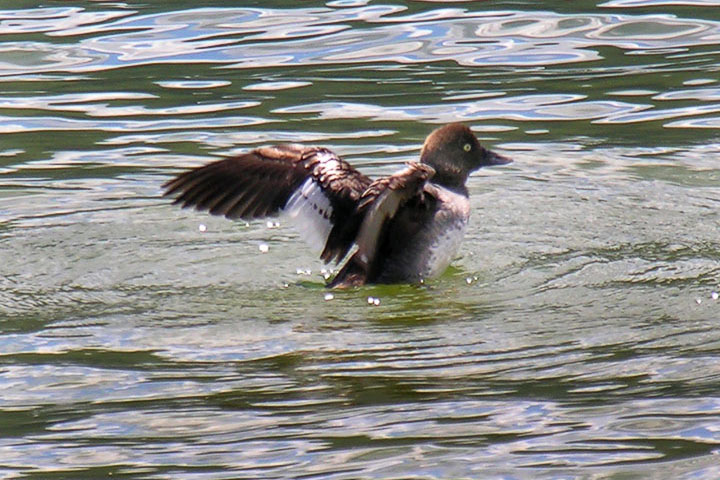 Common Goldeneye, female The goldeneye repeatedly spread and shook its wings, as if to clear them of something. Kootenay Lake is on the southern end of this duck’s summer range and the northern end of its winter range and so can be seen here all year long.
Common Goldeneye, female The goldeneye repeatedly spread and shook its wings, as if to clear them of something. Kootenay Lake is on the southern end of this duck’s summer range and the northern end of its winter range and so can be seen here all year long.
 Common Goldeneye, female In this shot just before the goldeneye dived, one can see the webbed feet spread ready to propel the bird down.
Common Goldeneye, female In this shot just before the goldeneye dived, one can see the webbed feet spread ready to propel the bird down.
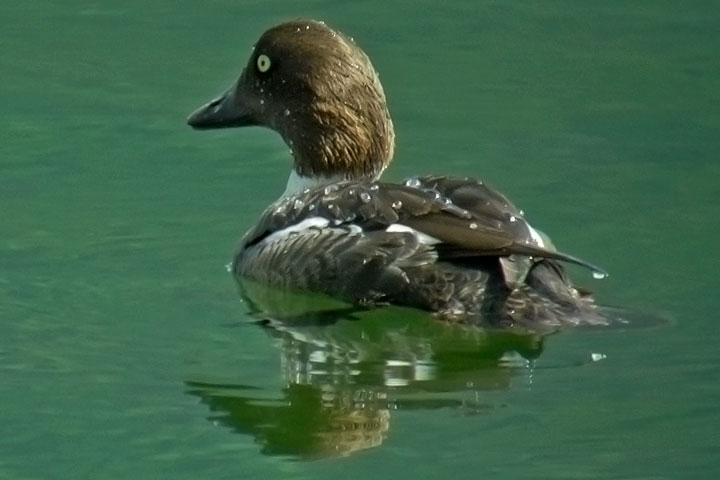 The same bird as on the left, seen in profile.
The same bird as on the left, seen in profile.
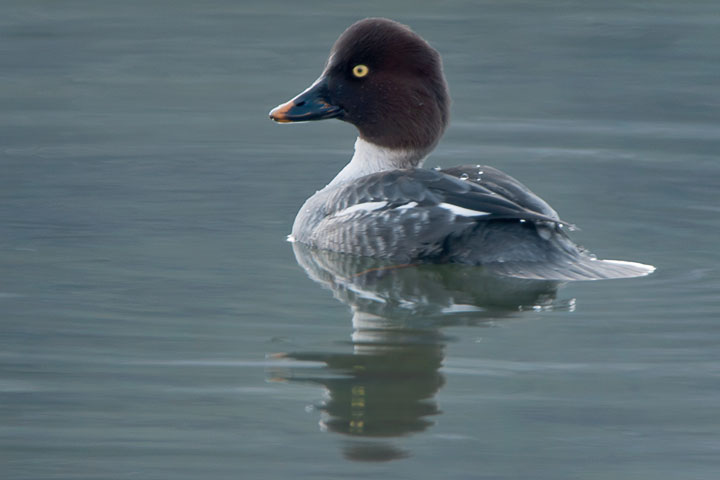 While the bill of the female Common Goldeneye is dark in the summer, from about November to May, it gains a yellow patch. This view is early December.
While the bill of the female Common Goldeneye is dark in the summer, from about November to May, it gains a yellow patch. This view is early December.
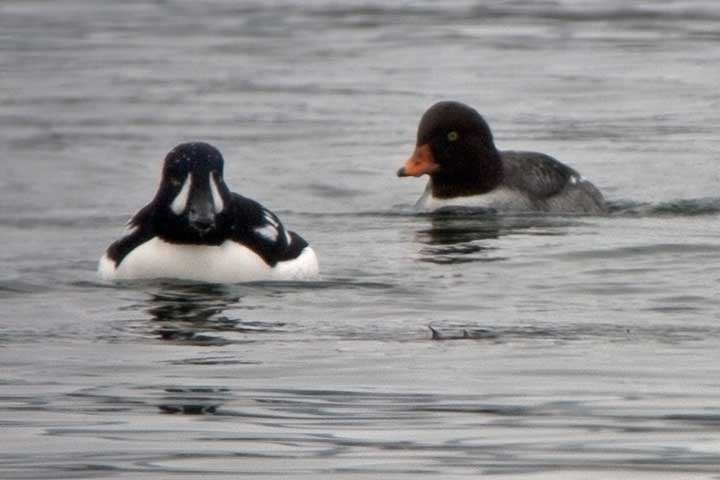 A Barrow’s Goldeneye couple, the male has comma–shaped white patch in the lores. At this time of the year, the female has a mainly yellow bill with a dark tip.
A Barrow’s Goldeneye couple, the male has comma–shaped white patch in the lores. At this time of the year, the female has a mainly yellow bill with a dark tip.
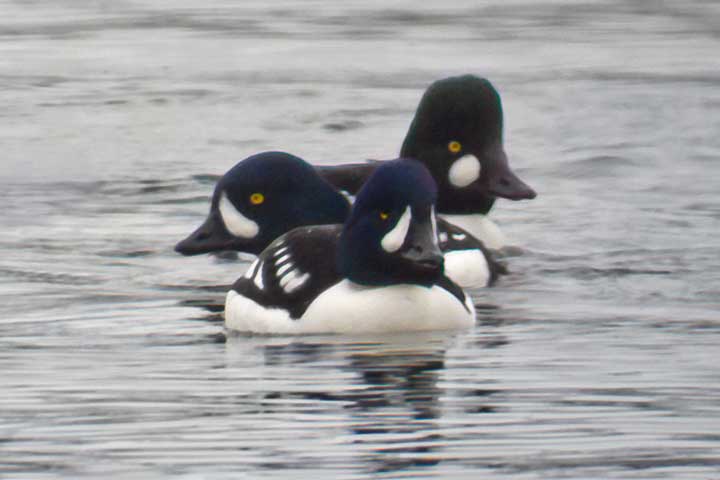 Two male Barrow’s (forward) and a Common Goldeneye (back).
Two male Barrow’s (forward) and a Common Goldeneye (back).
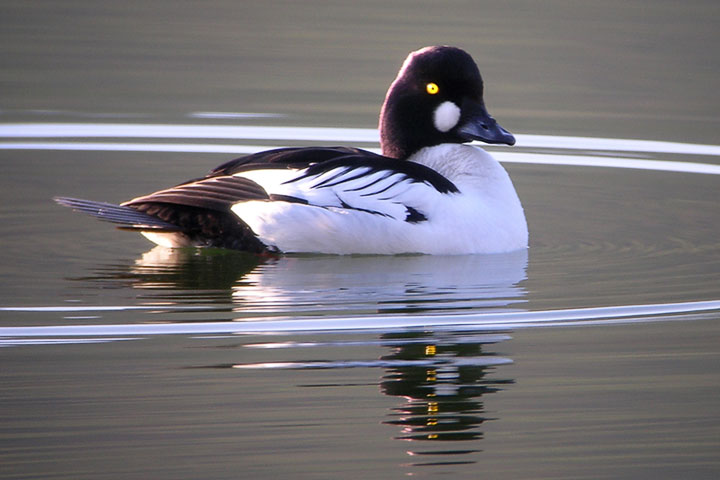 The male Common Goldeneye has a distinctive white oval on the cheek, and a black head.
The male Common Goldeneye has a distinctive white oval on the cheek, and a black head.
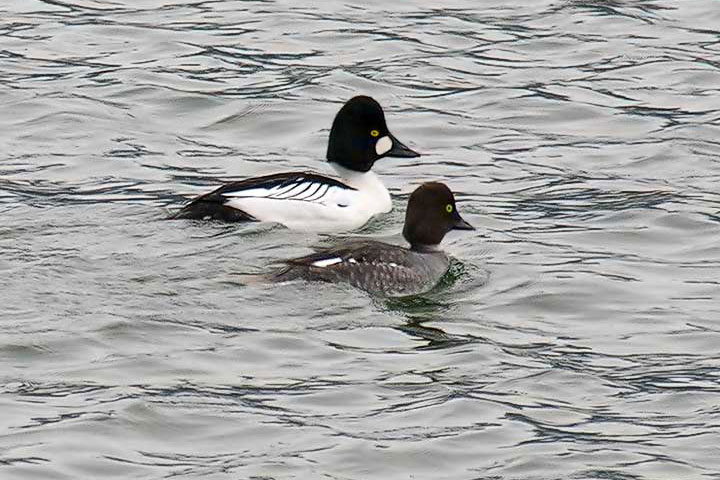 Common Goldeneye couple.
Common Goldeneye couple.
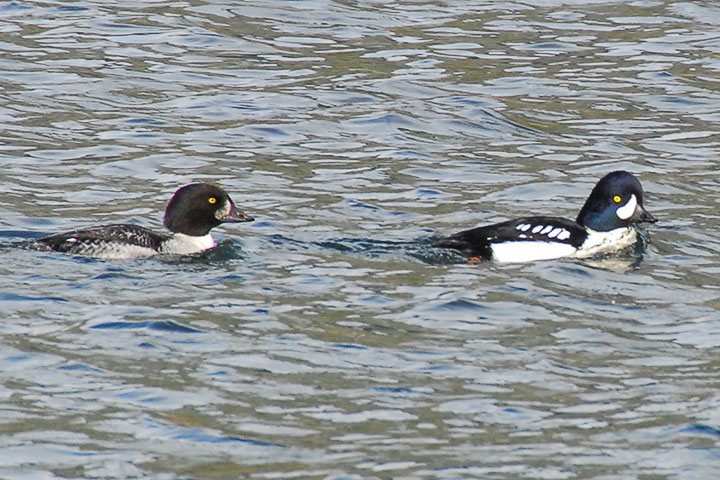 Barrow’s Goldeneye males have a white crescent, rather than the oval of the Common Goldeneye. The following male is a juvenile (first winter). The mature Barrow’s male is also distinguished from the Common by the extent of the white markings on the back. Barrow’s Goldeneye is found from the Rockies (summer) to the Coast (winter) and is mostly seen around Kootenay Lake in the fall as it moves from the one region to the other.
Barrow’s Goldeneye males have a white crescent, rather than the oval of the Common Goldeneye. The following male is a juvenile (first winter). The mature Barrow’s male is also distinguished from the Common by the extent of the white markings on the back. Barrow’s Goldeneye is found from the Rockies (summer) to the Coast (winter) and is mostly seen around Kootenay Lake in the fall as it moves from the one region to the other.
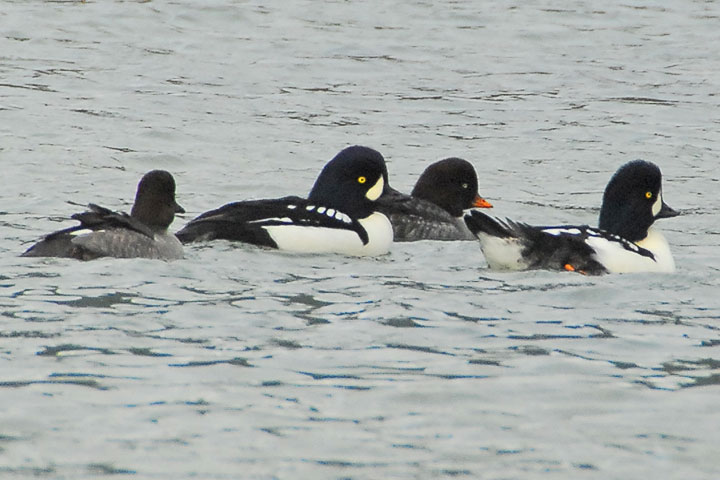 Two Barrow’s Goldeneye couples. The Barrow’s and Common Goldeneye females are not as easy to distinguish as are the males. But, the beak of the Common is mainly black while that of the Barrow’s is mainly yellow. The fact that the female differences are minor may account for the fact that hybrids can sometimes be seen.
Two Barrow’s Goldeneye couples. The Barrow’s and Common Goldeneye females are not as easy to distinguish as are the males. But, the beak of the Common is mainly black while that of the Barrow’s is mainly yellow. The fact that the female differences are minor may account for the fact that hybrids can sometimes be seen.
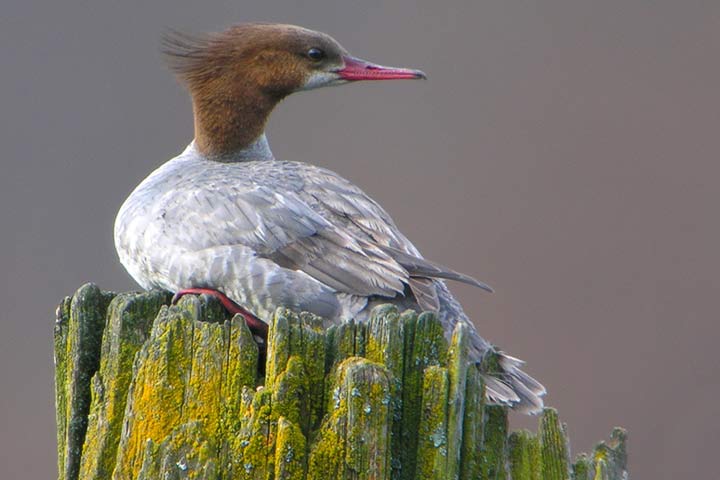 Common Merganser, female. The bird lounging in this way as if on a settee, reminds me of Ingre’s 1814 oil painting, La Grande Odalisque.
Common Merganser, female. The bird lounging in this way as if on a settee, reminds me of Ingre’s 1814 oil painting, La Grande Odalisque.
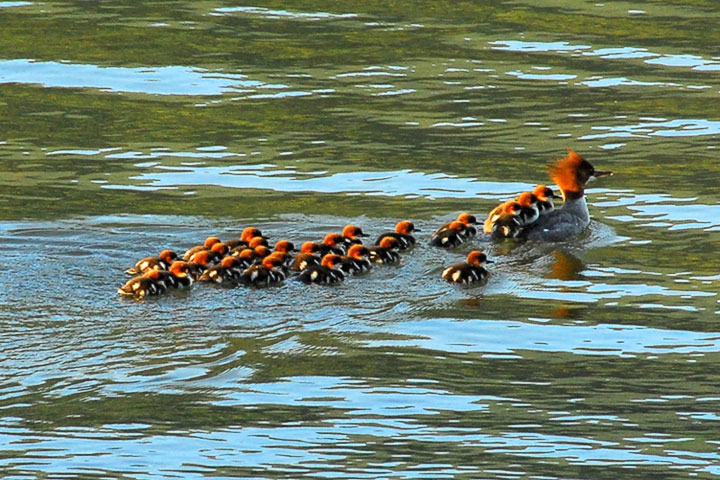 Merganser chicks often hitch a ride on the back of mother—but there isn’t always room for all.
Merganser chicks often hitch a ride on the back of mother—but there isn’t always room for all.
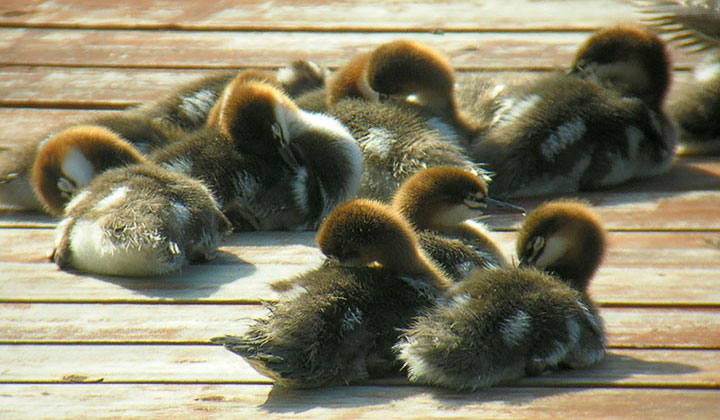 Nap time in the play school for merganser chicks.
Nap time in the play school for merganser chicks.
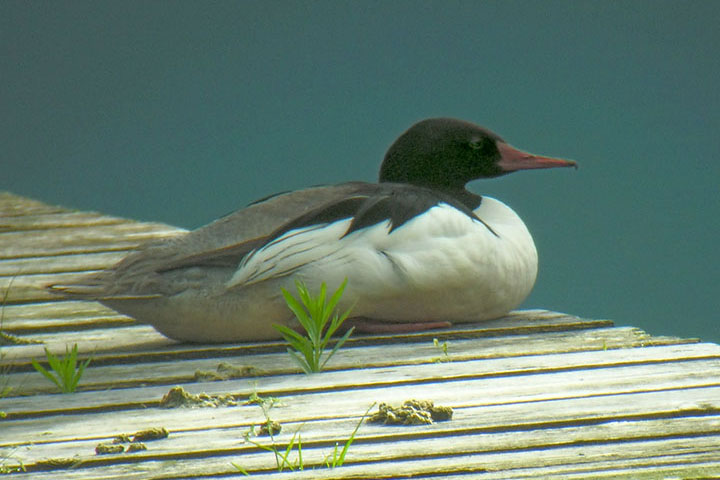 Common Merganser, male
Common Merganser, male
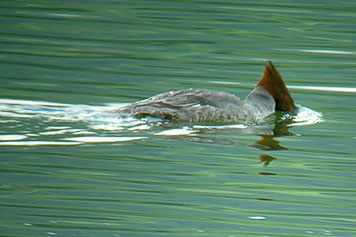 Female merganser scouring the depths for delectables.
Female merganser scouring the depths for delectables.
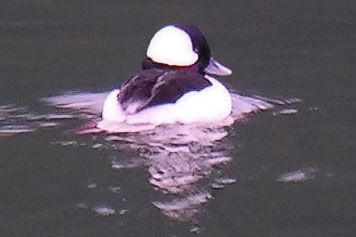 Bufflehead Duck, male. This is the smallest duck on the Lake. Its head apparently reminded early observers of that of a buffalo; thus its name.
Bufflehead Duck, male. This is the smallest duck on the Lake. Its head apparently reminded early observers of that of a buffalo; thus its name.
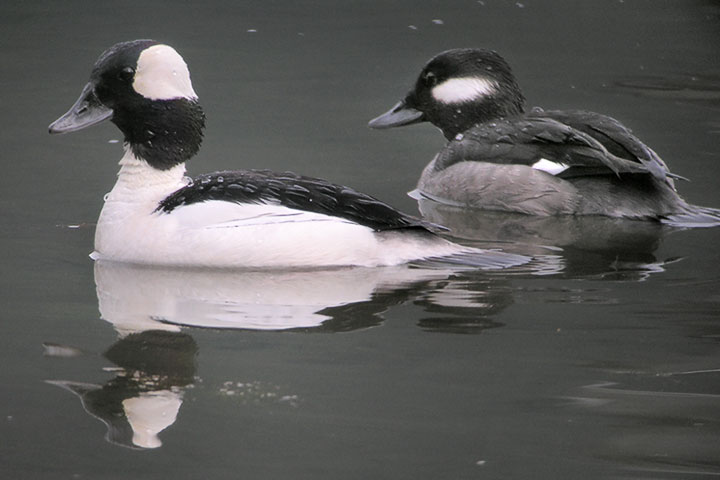 While the male Bufflehead Duck shows extensive white, the female only has an oval patch of white on the cheek. The Bufflehead is most common on the Lake during the colder months, having spent the breeding season farther north.
While the male Bufflehead Duck shows extensive white, the female only has an oval patch of white on the cheek. The Bufflehead is most common on the Lake during the colder months, having spent the breeding season farther north.
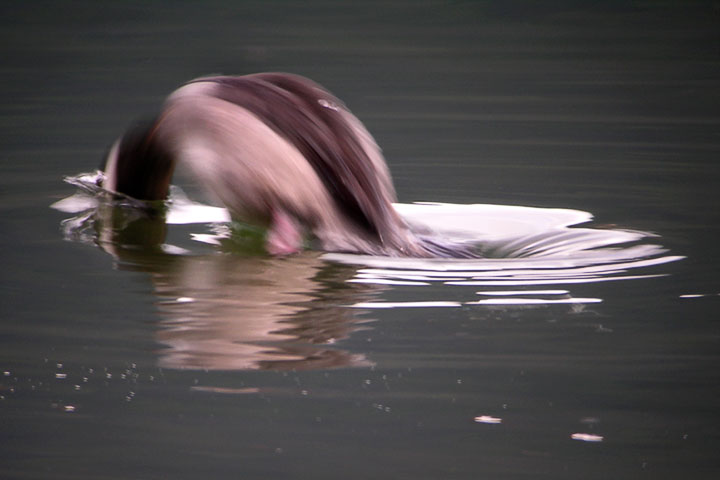 This Bufflehead Duck is diving.
This Bufflehead Duck is diving.
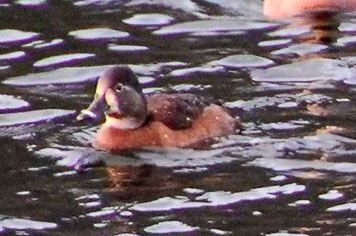 The female Ring-necked Duck is a more beige version of the male (below). She has a white eye ring.
The female Ring-necked Duck is a more beige version of the male (below). She has a white eye ring.
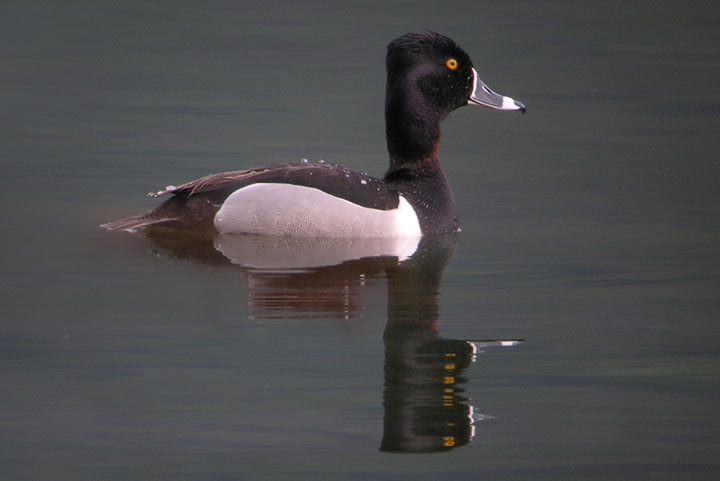 While the male Ring-necked Duck is more easily identified by the ring around the base of the beak than around the neck; this picture does show the faint redish ring around the neck that gives the duck its name.
While the male Ring-necked Duck is more easily identified by the ring around the base of the beak than around the neck; this picture does show the faint redish ring around the neck that gives the duck its name.
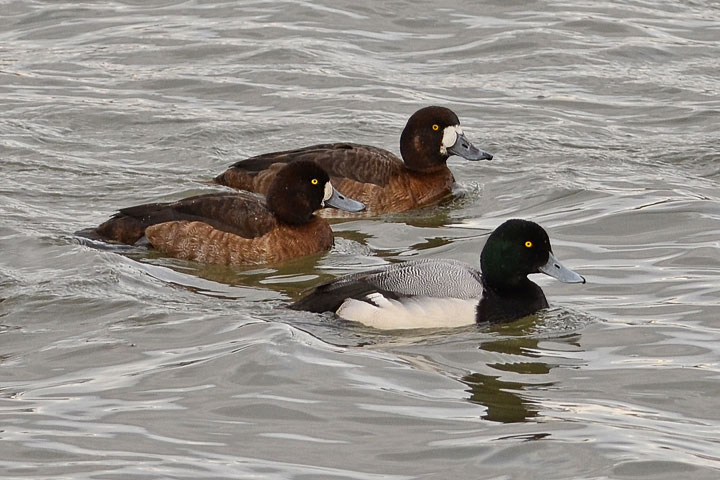 Two female Greater Scaups on the left and one male on the right. The female shows more brown and extensive white on the face.
Two female Greater Scaups on the left and one male on the right. The female shows more brown and extensive white on the face.
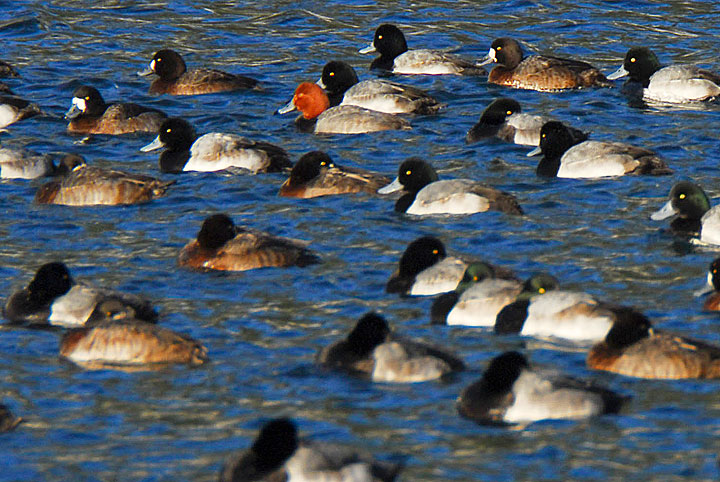 Dozens of Greater Scaups and a lone Redhead Duck are visiting the Lake in the wintertime.
Dozens of Greater Scaups and a lone Redhead Duck are visiting the Lake in the wintertime.
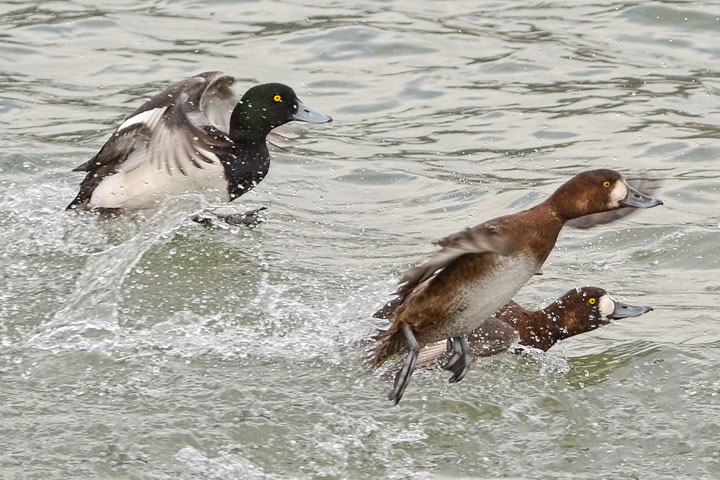 Greater Scaups land on the lake: male on the left; females on the right.
Greater Scaups land on the lake: male on the left; females on the right.
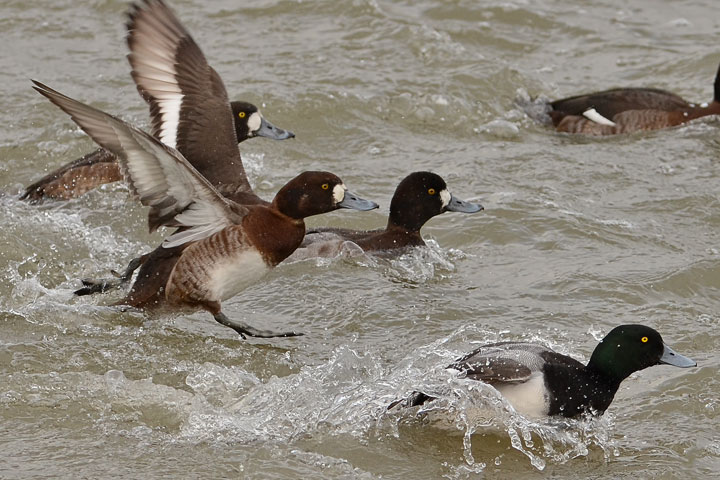 A female Greater Scaup touches down on the Lake.
A female Greater Scaup touches down on the Lake.
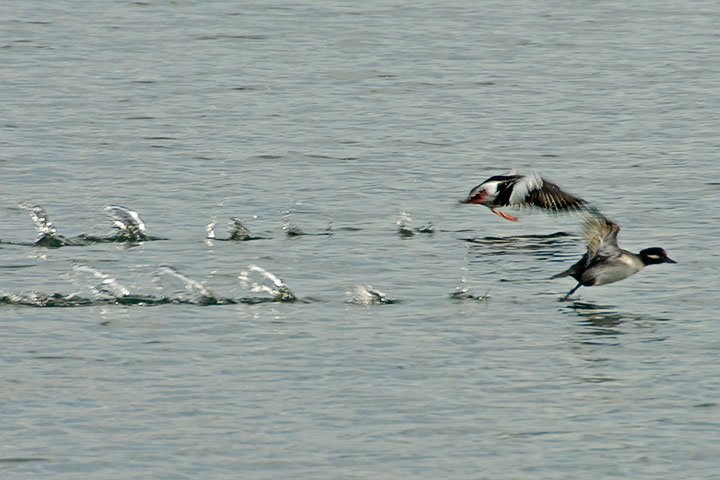 Diving ducks (these are Buffleheads) have small wings making it difficult to become airborne. They must run across the water to pick up speed.
Diving ducks (these are Buffleheads) have small wings making it difficult to become airborne. They must run across the water to pick up speed.
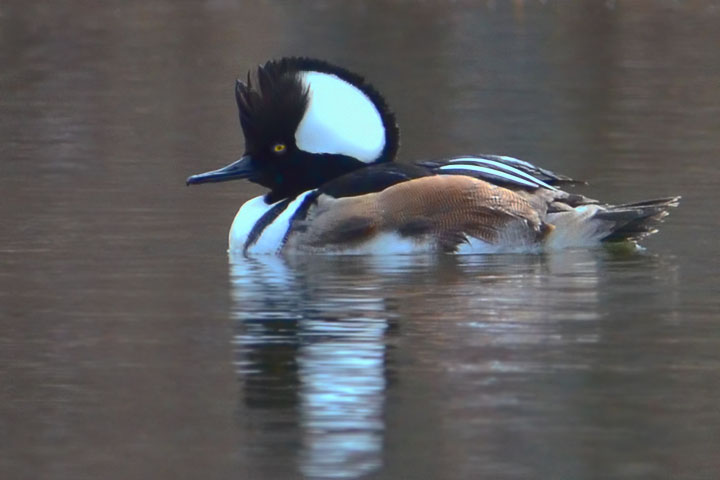 One only sees the male Hooded Merganser with his hood up during mating season.
One only sees the male Hooded Merganser with his hood up during mating season.
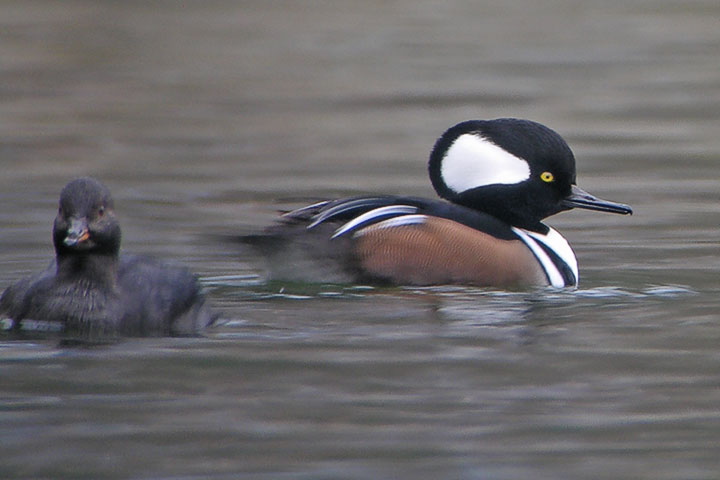 The female Hooded Merganser can be quite plain.
The female Hooded Merganser can be quite plain.
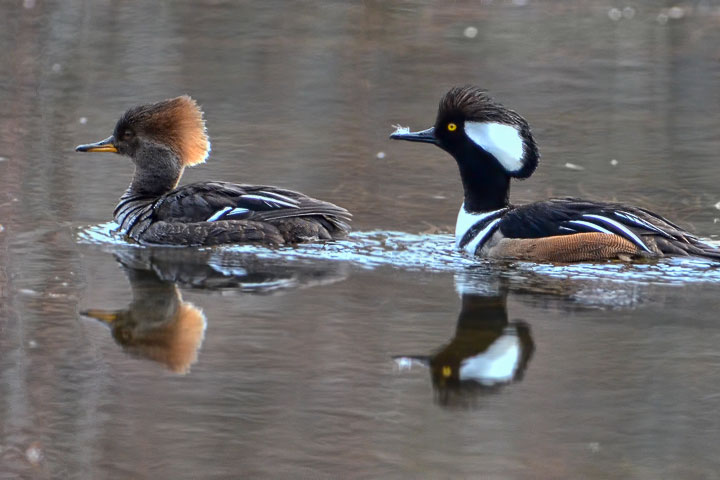 The female with her hood raised is striking.
The female with her hood raised is striking.
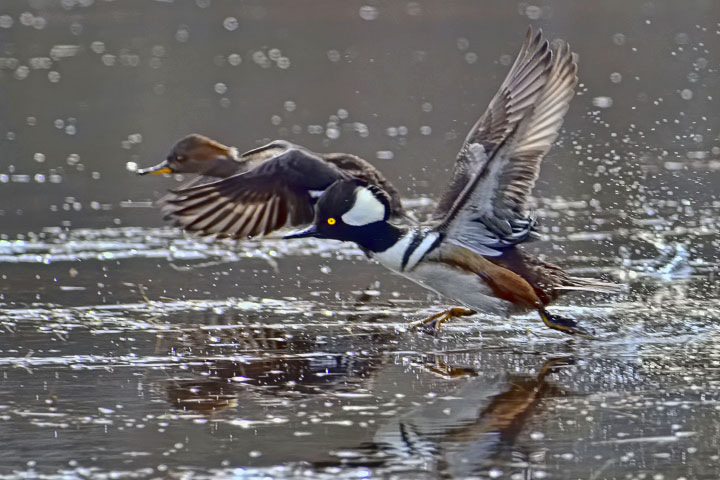 A hood couple takes to the air.
A hood couple takes to the air.
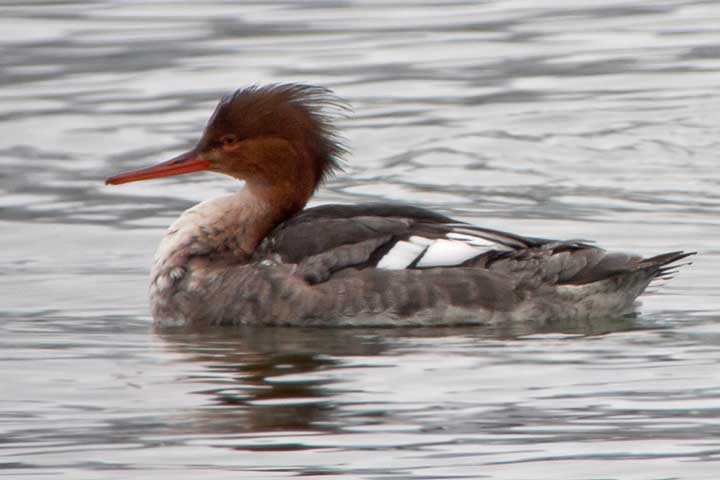 This is an uncommon sighting around here:, a Red–breasted Merganser female which was seen near Taghum in December.
This is an uncommon sighting around here:, a Red–breasted Merganser female which was seen near Taghum in December.
Information from Wikipedia:
Bufflehead,
Common Merganser,
Common Goldeneye,
Barrow’s Goldeneye,
Ring-necked Duck,
Greater Scaup,
Redhead Duck,
Hooded Merganser.
Red–breasted Merganser.
![]()